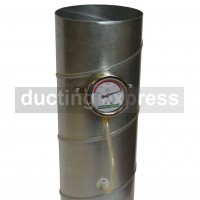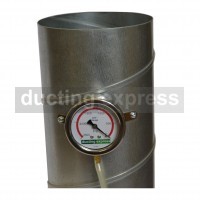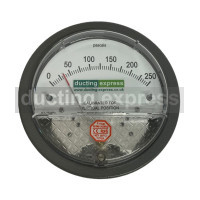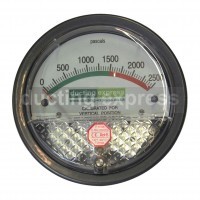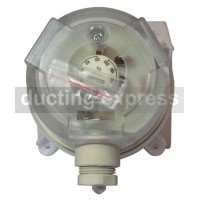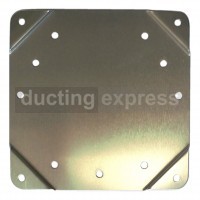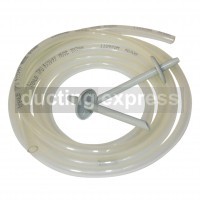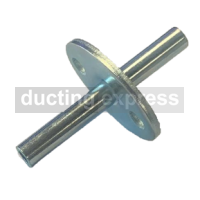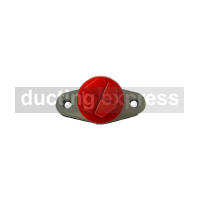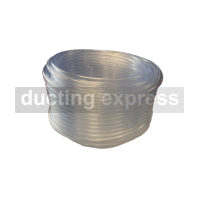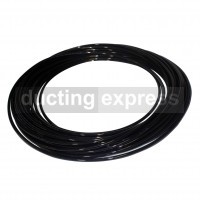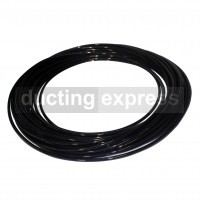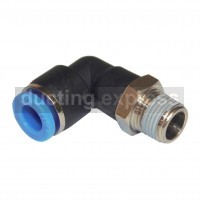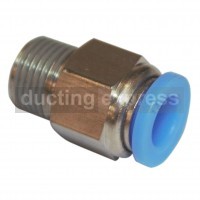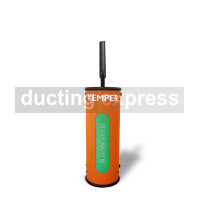LEV Indicators And Differential Pressure Gauges
Pressure differential gauges are actively used in filter monitoring. The main use within the dust extraction industry is to monitor the condition of the filter media within an enclosed dust extraction filter unit & also within the HVAC industry to monitor filter media condition.
You simply measure the difference in pressure between two points, the clean side of the filter and the dirty side of the filter, (pressure drop) the differential pressure would then give you an indication of the condition of the filter media, this can then be used to determine when to replace the filter media
The higher the differential pressure the more resistance there is in allowing the air to flow through the filter media, filter media can become blinded in dust resulting in reduced airflow.
Pressure differential gauges are also used in laboratories and clean rooms to give a visual indication of negative or positive pressure within a room
Our pressure differential gauges have a removable front and come with red and green stickers that will allow an engineer to set these to show Green for low DP and red for high DP this gives a simple visual indication of the condition of the filter media
There is no external power supply in mechanical differential pressure gauges. They’re local indicators and the indication is made possible after pressurizing, which leads to elastic deformation or a mechanical sensing element. Options like overpressure protection, safety, specific dials, and medium compatibility can be chosen to set the gauge to certain process requirements or for different applications.
Our pressure differential gauges are perfect for keeping an eye on a dust extraction filter’s condition. They come with a mounting bracket, a pipe and fittings and range from 0 to 2500 Pa.
We also provide durable LEV airflow indicators
LEV or Local Exhaust Ventilation systems eliminate dangerous dust and fume from operators’ breathing zones. They ensure that the air around an operator is safe and non-hazardous.
Considering that the majority of hazardous fumes are not visible to the eye, it’s important to have a visible means of inspecting LEV systems to ensure that they are working correctly. Furthermore, with LEV systems being a key part of the health & safety backbone of many businesses, it is important to be able to evidence that these systems are performing as expected.
An LEV airflow indicator helps with this task. It offers an easy-to-spot visual reference of the effectiveness of the LEV system. Installing an LEV airflow indicator to an existing system is straightforwards. We have created a series of videos relating to LEV indicators and our videos showing how to fit one can be found here:
The indicator can easily be installed in the system in an area that is easy-to-reach and check. This will provide a quick and easy flow of information on whether the LEV is functioning properly or not. An LEV airflow indicator will also help you ensure that the system continues to work properly.
Our LEV airflow indicator is compliant with HSG258 and functions at pressures ranging from 100 Pa to 2,000 Pa. It’s extremely simple to calibrate as opposed to analogue air flow gauges. It has a self-calibrating option to the pressures in the ducts. It is quick and easy to install as it is lightweight and can be mounted on the duct or another surface via self-tapping screws & banding. The indicator is also easy-to-use and is one of the most cost-effective solutions available on the market. It can be recalibrated, which means easy adaptability and flexibility to new static pressure.
We’re available to help you make the right choices and answer any questions you may have about our products.
-

LEV Indicator 0 To 1000 Pa
£63.70
-

LEV Indicator 0 To 2500 Pa
£58.94
-

Pressure Differential Gauge Kit 0 To 250 PA
£88.58
-

Pressure Differential Gauge Kit 0 To 2500 PA
£88.58
-

LEV Monitor - Chevron Airflow Indicator
£99.40
-

Differential Pressure Switch
£36.00
-

Pressure Differential Gauge Mounting Plate
£12.24
-

Air Proving Hose Kit
£5.00
-

Stainless Steel Air Proving Duct Connectors 40mm
£7.90
-

Stainless Steel Air Proving Duct Connectors 100mm
£9.90
-

Test Point Cap
£3.30
-

Clear Un-Reinforced PVC Hose I/D 6mm X O/D 8mm Sold Per Meter
£1.76
-

6MM O/D 4 MM I/D POLLY TUBE Per Meter
£1.62
-

Polyurethane Tubing 25mtr Long 6mm O/D X 4mm I/D
£17.21
-

6MM X 1/8 BSPT Push In Elbow
£1.70
-

6MM X 1/8 BSPT Male Stud Push Fit
£1.48
-

Kemper AirWatch Dust Monitoring System - 390200
£1,527.12
